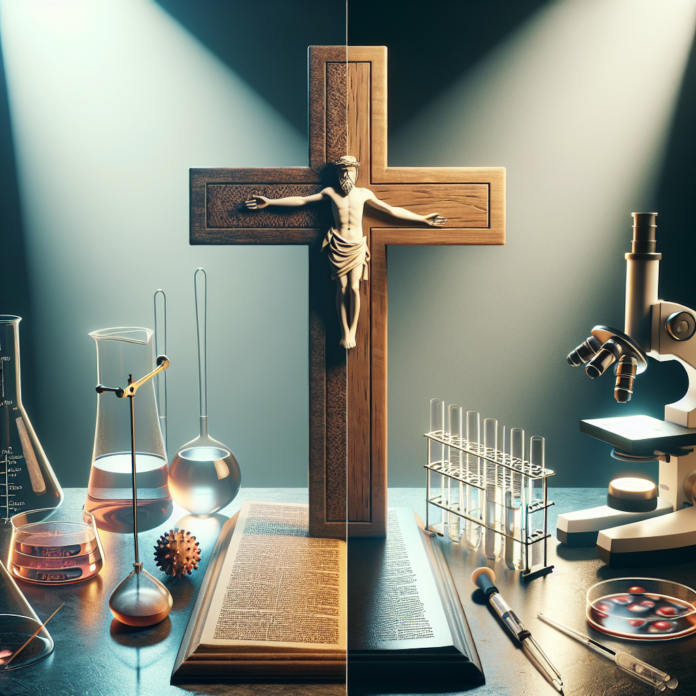The Catholic Church and Stem Cell Research: Navigating Ethical Boundaries
The intersection of religious ethics, scientific inquiry, and modern medical advancements presents an ongoing cultural and philosophical dialogue that continues to evolve. At the heart of this dialogue is the question of stem cell research, a scientific frontier promising unprecedented possibilities for curing diseases. Nestled within the complications of this conversation is the Catholic Church, a bastion of tradition often viewed as cautiously skeptical, if not oppositional, to pioneering scientific endeavors, particularly when ethical boundaries are at stake.
Historical Context: Tradition vs. Innovation
For centuries, the Catholic Church has held considerable influence over ethical standards in Western medicine. Grounded in the rich tapestry of its long history, intertwined with battles against scientific advancement, the Church has witnessed and sometimes resisted the march of innovation—evoking the memory of its cautious response to the heliocentric revelations of Galileo Galilei. A centuries-long dialogue was born from this tension, leading the Church to adopt a measured stance on scientific questions.
As modern stem cell research emerged in the late 20th century, it was met with mixed reactions from the Church. The virtues of healing and alleviation of suffering resonate with Catholic teachings, yet the means by which embryonic stem cells are acquired challenge foundational values about the sanctity of life. This ethical conundrum puts traditional Church teachings at odds with progressive scientific goals aimed at innovative cures for ailments like Alzheimer’s and Parkinson’s diseases.
Traditionalism Under the Microscope
At the core of this debate lies a division within the Church itself—a juxtaposition of traditionalism, evoking the solemnity of the Latin Mass and conservatism, with progressive voices advocating adaptation to contemporary scientific realities. Catholic conservatism, with its ardent commitment to long-held doctrines, continues to scrutinize developments in stem cell research, particularly those involving embryonic origins, which it perceives as being morally indistinguishable from abortion.
The Latin Mass culture, an emblem of liturgical preservation, reinforces this conservative approach to bioethics. To adherents, the reverent and unchanging traditional rites symbolize an unwavering commitment to the sanctity of life at every stage. However, this steadfast adherence may inadvertently stall dialogue with scientists and policymakers striving for a responsible yet forward-thinking integration of medical advances.
The Progressive Perspective
Contrasting traditionalist views, more progressive elements within the Catholic community underscore a theology embracing compassion and scientific collaboration. These voices seek a middle ground where respect for life is harmonized with the encouragement of innovation. Pope Francis’s leadership has infused the Church with a subtler, though undeniable, shift toward acknowledging the potential benefits of such research—emphatically calling for an ethical dialogue informed by science-driven compassion.
In his encyclical Laudato Si’, Pope Francis invited a fresh examination of ethics, emphasizing care and stewardship approaches that extend beyond environmental concerns to encompass medical advancements. This paradigm subtly endorses a reassessment of the Church’s current bioethical frameworks and encourages believers to consider how modern science can serve humanity’s most vulnerable.
Ethical Boundaries and Responsible Innovation
Navigating the ethical boundaries of stem cell research requires a nuanced understanding of both scientific intricacies and theological ethics. It calls for a rejection of polarized discourse, favoring informed deliberation and collaboration between the Church and scientific communities.
Innovative strategies, such as induced pluripotent stem cell (iPSC) technology, present pathways to redefine the research landscape. By producing stem cells without resorting to embryos, iPSC technology demonstrates how moral concerns can be addressed without stifling progress. This approach fosters a reconciliatory space where science and religious ethics can simultaneously flourish, acknowledging the dignity and potential inherent in human life and discovery.
Conclusion: Toward a Harmonious Future
As humanity stands at the crossroads of unparalleled scientific potential and deep-seated ethical questions, the Catholic Church finds itself in a pivotal position—poised to either embrace a future enriched by collaboration or remain tethered to its traditional moorings. The cultural and ethical dialogue surrounding stem cell research is symbolic of broader questions of faith, reason, and humanity’s collective responsibility to care for one another.
In championing progressive engagement with the world’s complex realities, the Church can honor its legacy of stewardship for life, aligning with modern aspirations for a future defined by healing and hope. For the Catholic Church, navigating the path of ethical scientific exploration not only stands to redefine its relationship with modernity but also, more crucially, to reaffirm its commitment to the greater good in an ever-changing world.
By fostering a milieu where ethical integrity and scientific progress coexist, the Church can inspire a generation eager to explore and nurture the vast potential of the human spirit—a journey that transcends the constraints of tradition and affirms the boundless promise of compassionate innovation.
